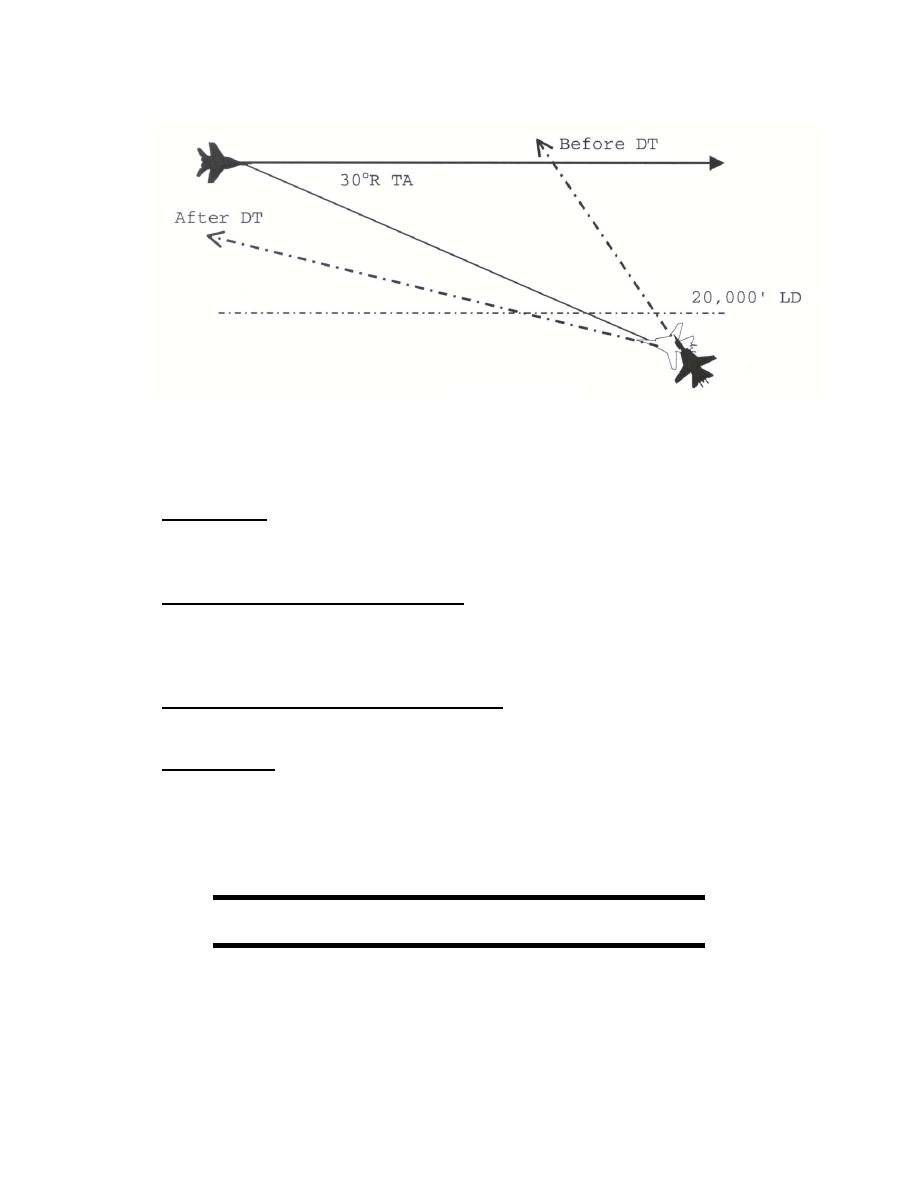 |
|||
|
|
|||
|
|
|||
| ||||||||||
|
|  INTERCEPT PROCEDURES TEXTBOOK
Figure 4
Accomplishing the DT Objectives
1. Determine TA. It should be obvious at this point that this number is extremely important.
With a bogey on the scope, use the cut→AO = TA formula. If contact is lost, use the BR→BB =
TA formula.
2. Determine the correct displacement range. With what rounds to 20 TA or less, displace
the bogey at 10 nm. With what rounds 25 TA or more, displace the bogey at 8 nm. Note that
with 20 TA, the formula for calculating LD gives us 20,000' at 10 nm and that the same is true
for 25 TA at 8 nm.
3. Determine the correct displacement point (AO), left or right of the fighter's nose in
accordance with the calculated TA.
4. Command pilot to use a hard turn in the direction necessary to place the bogey on the
displacement point. The command would be "Right (or Left) hard for displacement."
The goal in determining proper displacement points is to place all amounts of target aspect
the same number of degrees from collision bearing so that the resulting drift will be similar for
all intercepts.
Displacement points at VT-86 will place the bogey
approximately 25 from collision bearing.
Example: If the TA is 25L, the collision bearing is 25R with a 50R cut. The displacement
point for that is 25L (according to the table below). To move the bogey from 25R to 25L
would take a right turn of 50. After the turn, your new cut is 0 (50R cut, turn right 50 = 0
cut). Collision bearing (always 1/2 the current cut, co-speed), = 0 (dead ahead). The bogey is
now 25 left of our "new" collision bearing and will therefore drift to the left.
61
|
|
Privacy Statement - Press Release - Copyright Information. - Contact Us |